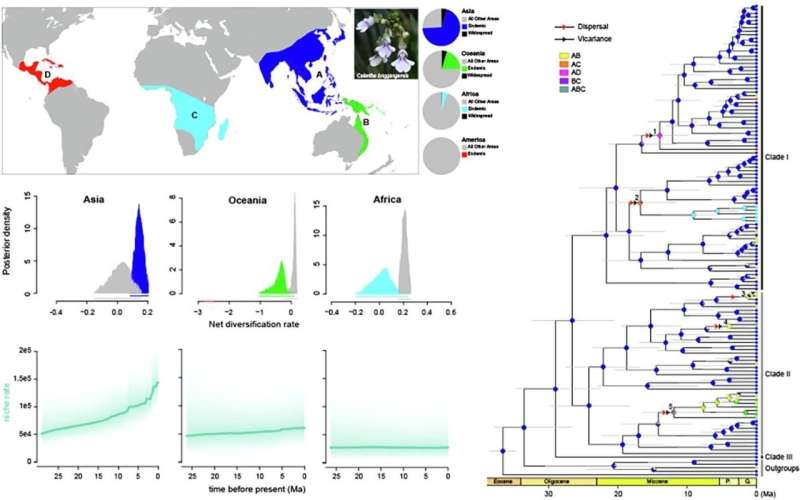This article has been reviewed according to Science X's editorial process and policies. Editors have highlighted the following attributes while ensuring the content's credibility:
fact-checked
peer-reviewed publication
trusted source
proofread
Net diversification rate mainly drives species richness disparity in tropical terrestrial orchids

Species richness is not only spatially heterogeneous along latitudes, but also among hyperdiverse tropical floras. However, few studies have elucidated the patterns of species richness in tropical terrestrial orchids.
In a study published in Molecular Phylogenetics and Evolution, researchers from the Xishuangbanna Tropical Botanical Garden (XTBG) of the Chinese Academy of Sciences and their collaborators sought to reveal the temporal and spatial dynamics of tropical terrestrial orchids and to clarify the main factors of species richness disparity among tropical floras through their evolutionary history.
The researchers reconstructed the phylogenetic relationships and evolutionary history of Collabieae, and combined climate and distribution data to discuss the potential drivers of the global species richness disparities among tropical floras.
The researchers collected 127 species in 21 genera (representing 88% genera and 26% species) of the tribe Collabieae in the orchid family, and used 24 plastid markers and two nuclear regions to reconstruct the most extensively sampled phylogenetic tree of Collabieae to date.
Based on empirical and simulated complete sampling, the researchers further investigated the biogeography, diversification processes and niche evolutionary rates of Collabieae.
They found that the Collabieae originated in Asia and spread independently to other tropics. Both the net diversification and niche evolutionary rates of Asian lineages were higher than those of African and Oceanian lineages. Precipitation was the most important environmental factor, combined with the fact that the Asian lineage has experienced a more stable and humid climate, which may contribute to the high diversification rate of Collabieae in Asia.
"We therefore considered that the different net diversification rate is the main driver of species richness disparity, integrated with different colonization times," said Luo Yan of XTBG.
More information: Peng Zhou et al, Species richness disparity in tropical terrestrial herbaceous floras: Evolutionary insight from Collabieae (Orchidaceae), Molecular Phylogenetics and Evolution (2023). DOI: 10.1016/j.ympev.2023.107860
Journal information: Molecular Phylogenetics and Evolution
Provided by Chinese Academy of Sciences




















